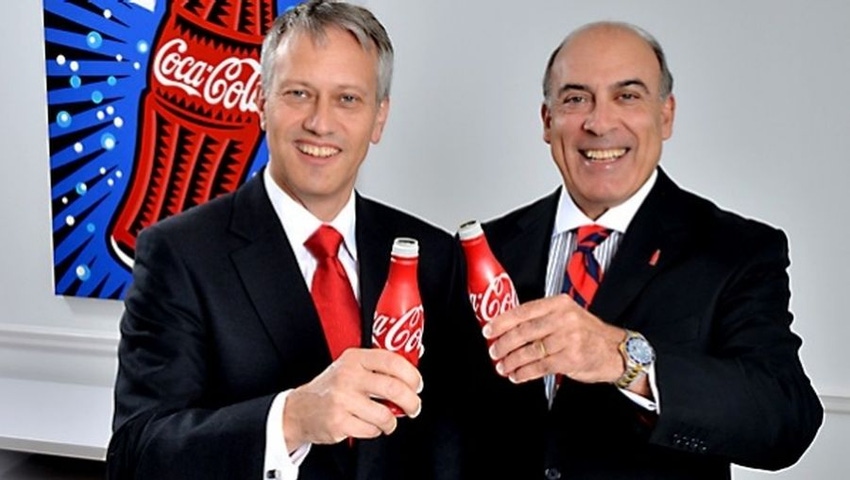The Coca-Cola Company today announced its plan for James Quincey, president and COO, to succeed current Chairman and Chief Executive Officer Muhtar Kent effective May 1, 2017. Kent will continue as Chairman of the Board of Directors. The Board intends to nominate Quincey to stand for election as a director at the 2017 annual shareowners meeting in April.

The Coca-Cola Company today announced its plan for James Quincey, president and COO, to succeed current Chairman and Chief Executive Officer Muhtar Kent effective May 1, 2017. Kent will continue as Chairman of the Board of Directors. The Board intends to nominate Quincey to stand for election as a director at the 2017 annual shareowners meeting in April.
The move is part of Coca-Cola’s long-term growth plan that requires a thoughtful and orderly succession planning process. “I have been engaged with our Management Development Committee and the full Board on talent development and succession discussions throughout my tenure as CEO. We are certain that James Quincey is prepared for these new responsibilities and is the absolute right choice to lead our company and system into the future," Kent said.
The elevation of Quincey, 51, to Coca-Cola’s the top position comes at a time of important evolution for the company, which has refocused its core business model of building strong global brands, enhancing sustainable customer value and leading a strong, dedicated franchise system. Quincey was named Coca-Cola’s president and COO in August 2015. In 2016, he rolled out a new international operating structure and leadership team to make the company more efficient and effective at the local levels, helping its operating units become faster and more agile.
The succession plan highlights the company’s commitment to diversifying its interests to compensate for declining soft drink sales. The carbonated beverages category has taken a hit due perceived negative health connotations around obesity and sugar intake and many brands looking to stake a new claim to consumers’ purchases are turning to natural alternative sweeteners that carry consumer associations of health benefits, such as fewer calories, lower glycemic indexes and notable absences of certain other ingredients that appear to be falling out of favor.
In describing Quincey, Kent said: “I know that his vast industry knowledge, expertise with our brands, values and system, coupled with an acute understanding of evolving consumer tastes, make him the ideal candidate to effectively lead our company and bottling system. James has the strategic vision and inspirational leadership to usher in the next phase of growth for our great business."
What I find extremely important about that comment is Quincey’s “acute understanding of evolving consumer tastes." It is no secret that consumers’ taste are changing and shifting consumer demands have led to immense innovation in the beverages category with the current trends led by the emphasis on health and wellness. (Check out INSIDER’s “Formulating Better-For-You Beverages" Digital Magazine to find out how product developers are improving nutrition by adding more of the things consumers want—like nutrients, vitamins, minerals and “natural" ingredient alternatives—and less of the things they don’t—like added sugars and preservatives.)
Throughout his 20-year career at Coca-Cola, Quincey has shown leadership in addressing consumer changes by expanding product offerings, introducing smaller package sizes, and most recently, driving systematic portfolio reformulation to reduce added sugar with more than 200 initiatives in progress.
These initiatives are extremely important as serving sizes and added sugar content are two critical issues facing the food and beverage industry.
In May 2016, FDA unveiled new requirements for the Nutrition Facts label of packaged foods, including the reporting of a product’s added sugar content. This new attention to added sugar intake on packaging—as well as consumer demand for sweeteners that are natural, sustainable and healthful—provides brands the opportunity to increase use of alternative sweeteners when developing or reformulating products.
Equally important are the new requirements for serving sizes that more closely reflect the amounts of food that people currently eat. What and how much people eat and drink has changed since the last serving size requirements were published in 1993. By law, the Nutrition Labeling and Education Act requires that serving sizes be based on what people actually eat. For packages between 1 and 2 servings, such as a 20-ounce soda, the calories and other nutrients will be required to be labeled as 1 serving because people typically consume it in one sitting.
About the Author(s)
You May Also Like






.png?width=800&auto=webp&quality=80&disable=upscale)